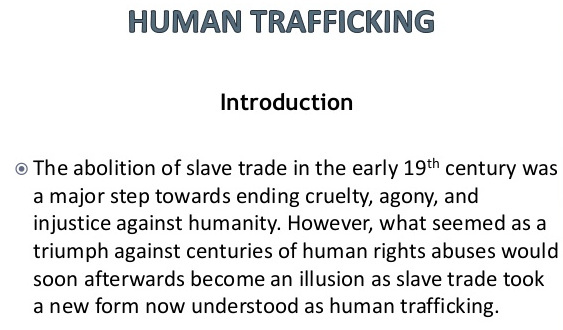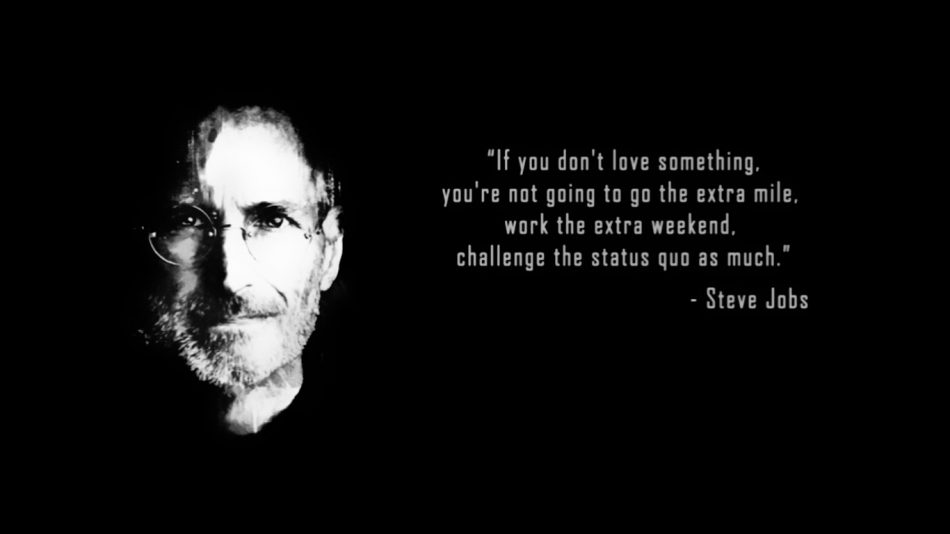
Go the extra mile
To make more effort than is expected of you:
He’s a nice guy, always ready to go the extra mile for his friends.
Cambridge Dictionary
1 Eleven thousand years ago
1 How to spot human trafficking | Kanani Titchen | TEDxGeorgeSchool
13 feb. 2017
The numbers associated with human sex trafficking are staggering, but the lives of victims and survivors are what stay with us. In this talk, Kanani Titchen M.D. reveals her experiences as a physician whose interactions with trafficked patients opened her eyes to a parallel world previously unseen.
Kanani Titchen MD, is an Adolescent Medicine fellow at the Children’s Hospital at Montefiore, Bronx, New York. She encountered human sex trafficking for the first time during a gynecologic rotation while in medical school at Sidney Kimmel Medical College of Thomas Jefferson University in Philadelphia, Pennsylvania.
Kanani served as the 2013-2014 President of the American Medical Women’s Association National Resident Division. During her tenure as President, she trained with Girls’ Educational & Mentoring Services in New York City and created an online video tutorial to educate doctors about human sex trafficking.
She has authored numerous articles for medical journals and for the lay press about US child sex trafficking and physician education, and she has advocated for sex trafficking survivors at the United Nations and at the US Department of Health and Human Services.

A 12 minutes searching talk in the video above.
Once upon a time about eleven thousand years ago during the Neolithic Revolution agriculture was invented…
It happens in New York.
It is about human trafficking…
To go the extra mile…
“The eye doesn’t see what the mind doesn’t know.”
DH Lawrence
“The eye doesn’t see what the mind doesn’t know” is a phrase that conveys the idea that our perception and interpretation of reality are influenced by our pre-existing knowledge, beliefs, and experiences. The key points of this statement can be summarized as follows:
Perception is subjective: Our perception of the world is not purely objective, but rather subjective and influenced by our mental framework. We see and interpret things based on our previous knowledge, beliefs, and experiences.
Knowledge shapes perception: Our mind filters and interprets sensory information received by our eyes based on our existing knowledge. If we are not aware of something, we are less likely to notice it or recognize its significance, even if it is right in front of us.
Ignorance can limit perception: Lack of knowledge or awareness about certain things can result in overlooking or ignoring important details or opportunities. Our mind may filter out information that doesn’t fit our existing beliefs or expectations, leading to a limited perception of reality.
Open-mindedness is important: To truly see and understand the world, it is important to have an open mind, be willing to learn, and update our knowledge as needed. By expanding our knowledge and being open to new information and perspectives, we can enhance our perception and gain a deeper understanding of reality.
Perception is malleable: Our perception of reality can be shaped or distorted by our beliefs, biases, and assumptions. It is important to be aware of our mental filters and strive to develop a more objective and balanced perception by continually expanding our knowledge and challenging our preconceived notions.
In summary, “The eye doesn’t see what the mind doesn’t know” emphasizes the subjective nature of perception and the role of knowledge, beliefs, and experiences in shaping our perception of reality. It underscores the importance of being open-minded, aware of our biases, and continually expanding our knowledge to gain a more accurate and comprehensive understanding of the world.

A compelling talk about justice and conscience…
You have to do what you have to do
Use the gifts that you have (as explained in the video)
Recognise and acknowledge – Herkennen en erkennen
“Go the extra mile” is a common phrase that encourages people to put in additional effort or go beyond what is expected of them in order to achieve success or provide exceptional service. Here are some key points related to the concept of “going the extra mile”:
Effort beyond expectations: “Going the extra mile” means putting in effort beyond what is required or expected. It involves going above and beyond what is considered the minimum or standard level of effort, and taking additional steps to achieve a higher level of performance.
Commitment to excellence: “Going the extra mile” reflects a commitment to excellence and a willingness to push oneself beyond the comfort zone. It involves taking initiative, being proactive, and demonstrating a strong work ethic in order to achieve exceptional results.
Stand out from the crowd: “Going the extra mile” can set you apart from others by demonstrating your willingness to do more than what is expected. It can help you stand out in a competitive environment and make a positive impression on others, such as employers, customers, or colleagues.
Create opportunities: “Going the extra mile” can create new opportunities for growth and advancement. By consistently putting in extra effort, you can develop new skills, expand your knowledge, and increase your chances of success in your personal and professional endeavors.
Customer satisfaction: In a customer service context, “going the extra mile” means providing exceptional service to exceed customer expectations. By going above and beyond to meet customer needs, you can build customer loyalty, gain positive reviews, and earn repeat business.
Positive mindset: “Going the extra mile” requires a positive mindset, which includes having a proactive and optimistic attitude towards challenges and a willingness to embrace and overcome obstacles. It also involves being self-motivated, disciplined, and resilient in the face of setbacks.
Personal growth: “Going the extra mile” is not only about achieving external success, but also about personal growth and development. It requires self-awareness, self-reflection, and a continuous desire to improve oneself.
Team collaboration: “Going the extra mile” can also involve supporting and helping others in a team setting. It can foster a collaborative and supportive work environment, where team members are willing to assist each other and contribute beyond their individual roles or responsibilities.
Overall, “going the extra mile” is about putting in extra effort, demonstrating commitment to excellence, creating opportunities, and fostering personal and professional growth. It can lead to success, satisfaction, and recognition in various aspects of life.
2 Any fool can make things bigger...
A single detail can change in a blink of an eye your whole experience,
the way you look at something and how you think about an issue.
Go the extra mile.
We need the whole picture – as in the video above.
It is the lesson we learn from Albert Einstein.
Please enjoy the well done Candid Camera below. 
It takes a touch of genius – and a lot of courage – to move in the opposite direction.





A teacher who doesn’t pretend but really cares about his students, even if they are no longer his students…
Leraar ontmoet studenten 20 jaar later
Een leraar die niet doet alsof, maar echt om zijn leerlingen geeft, ook al zijn ze zijn leerlingen niet meer…


2 Generous Homeless Man
Electric Voodoo Prank
Voodoo man shows his dark magic skills to some innocent people in the park.
Generous Homeless Man
10 apr. 2011